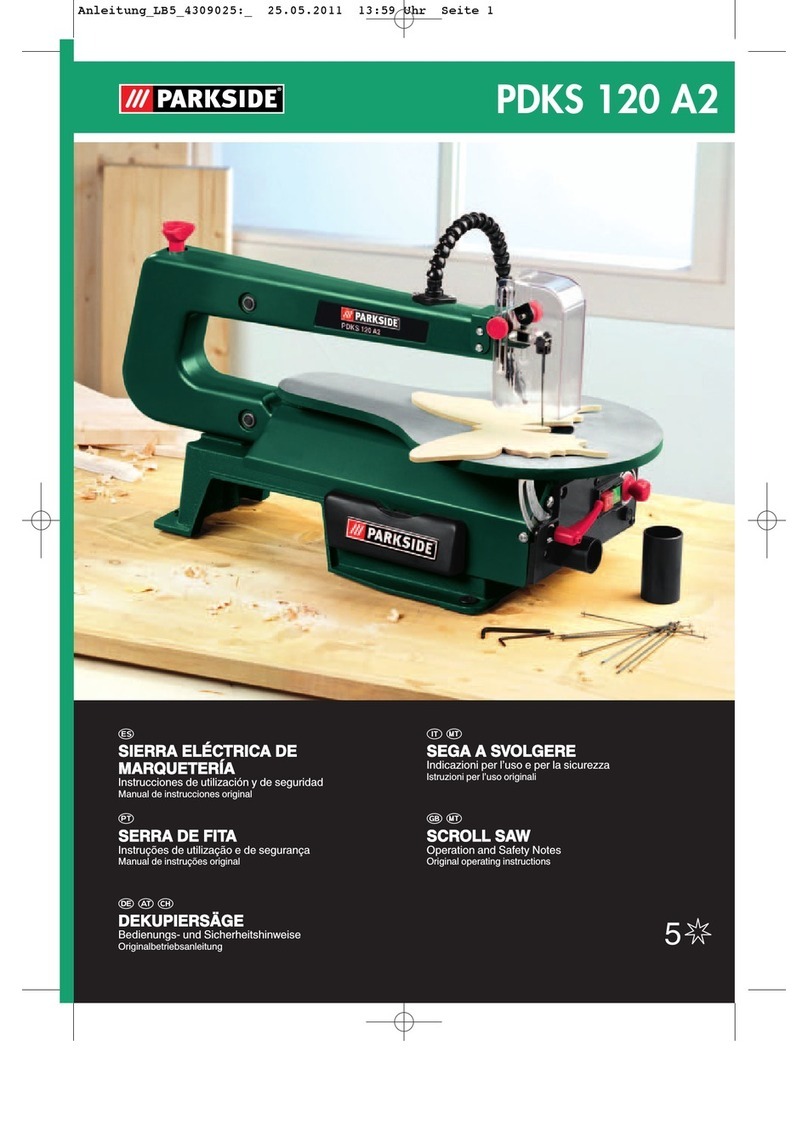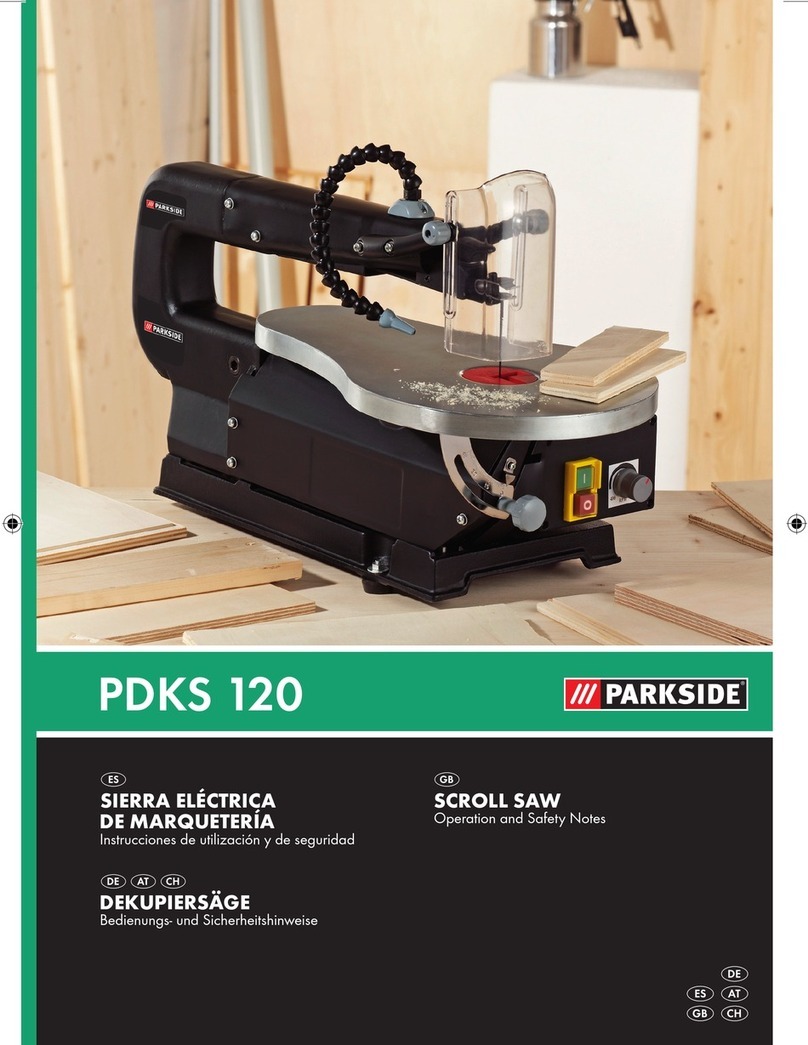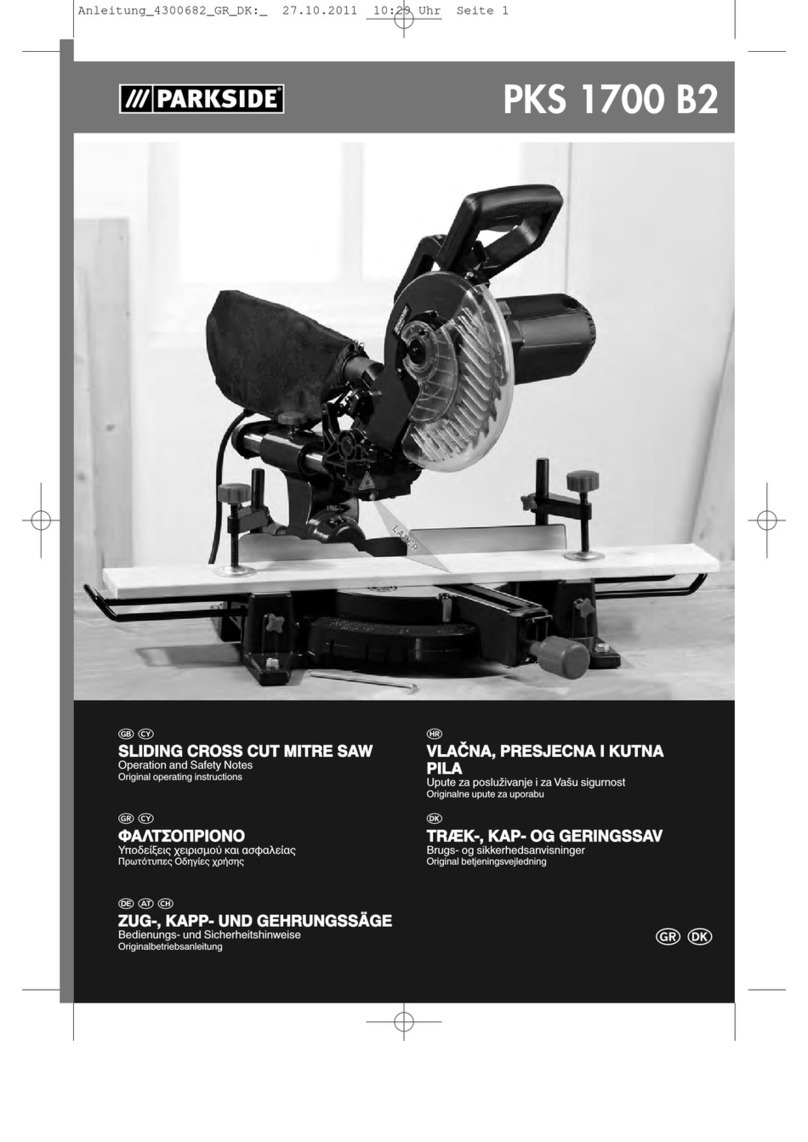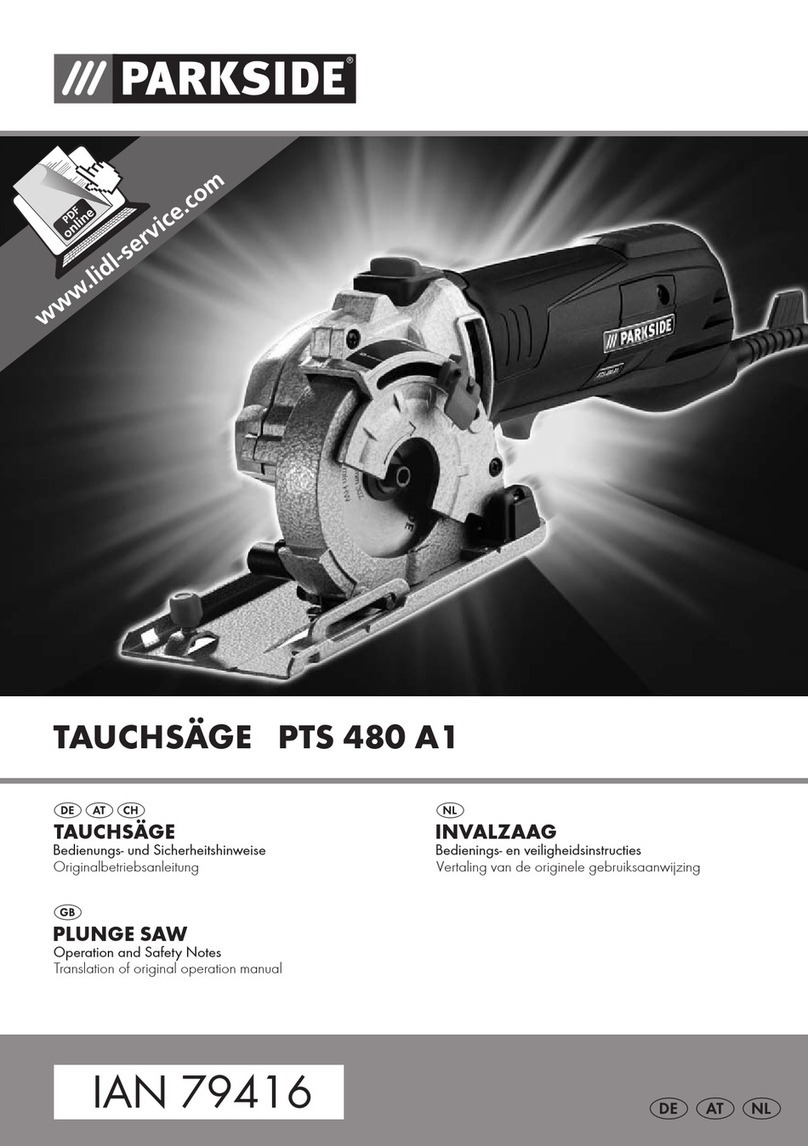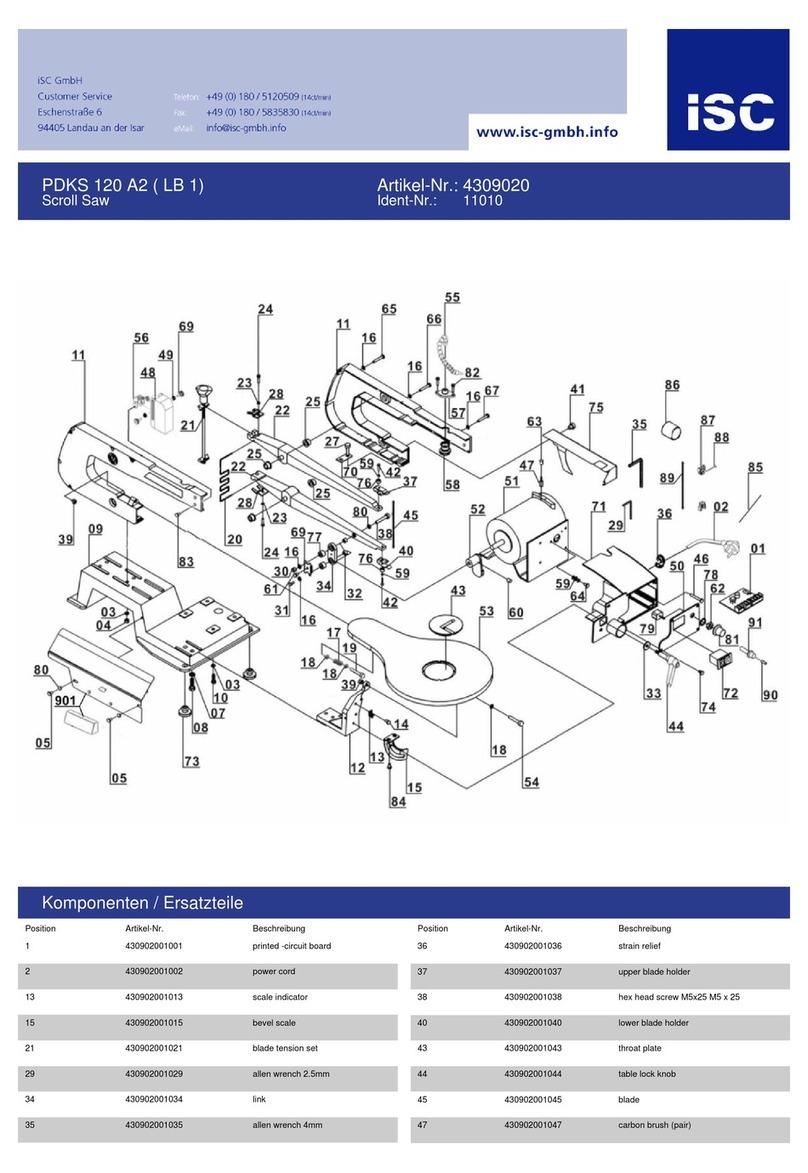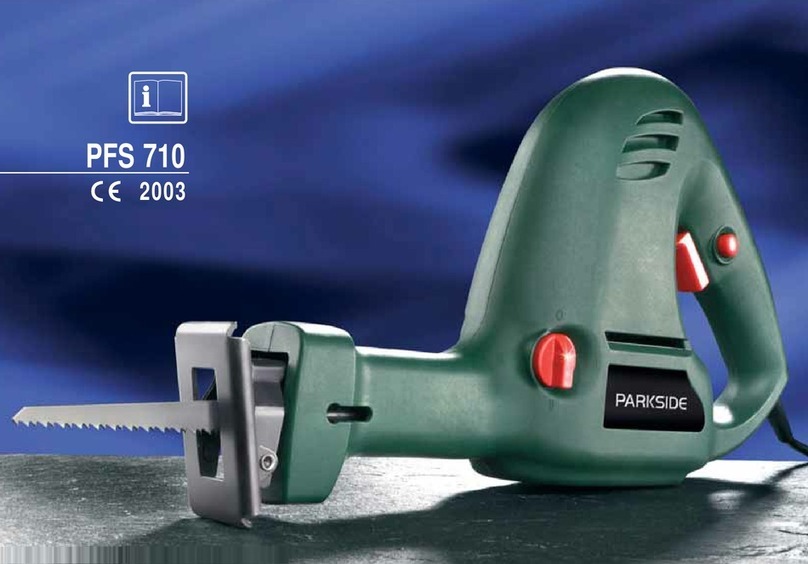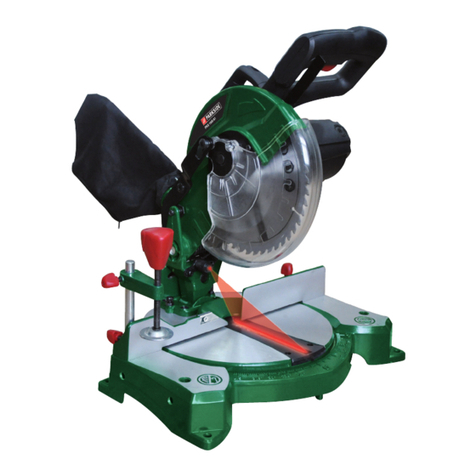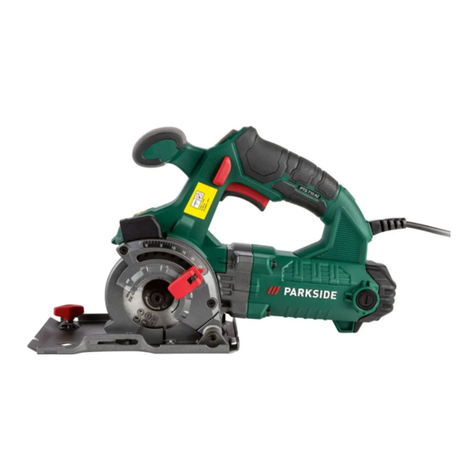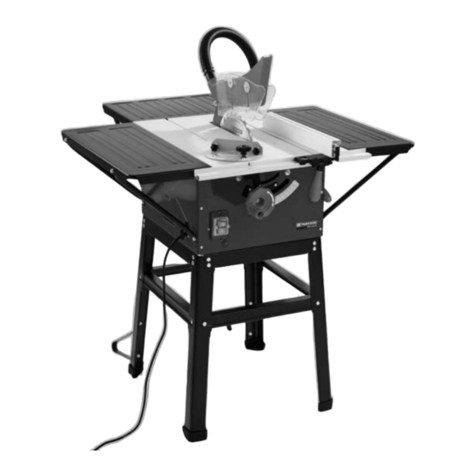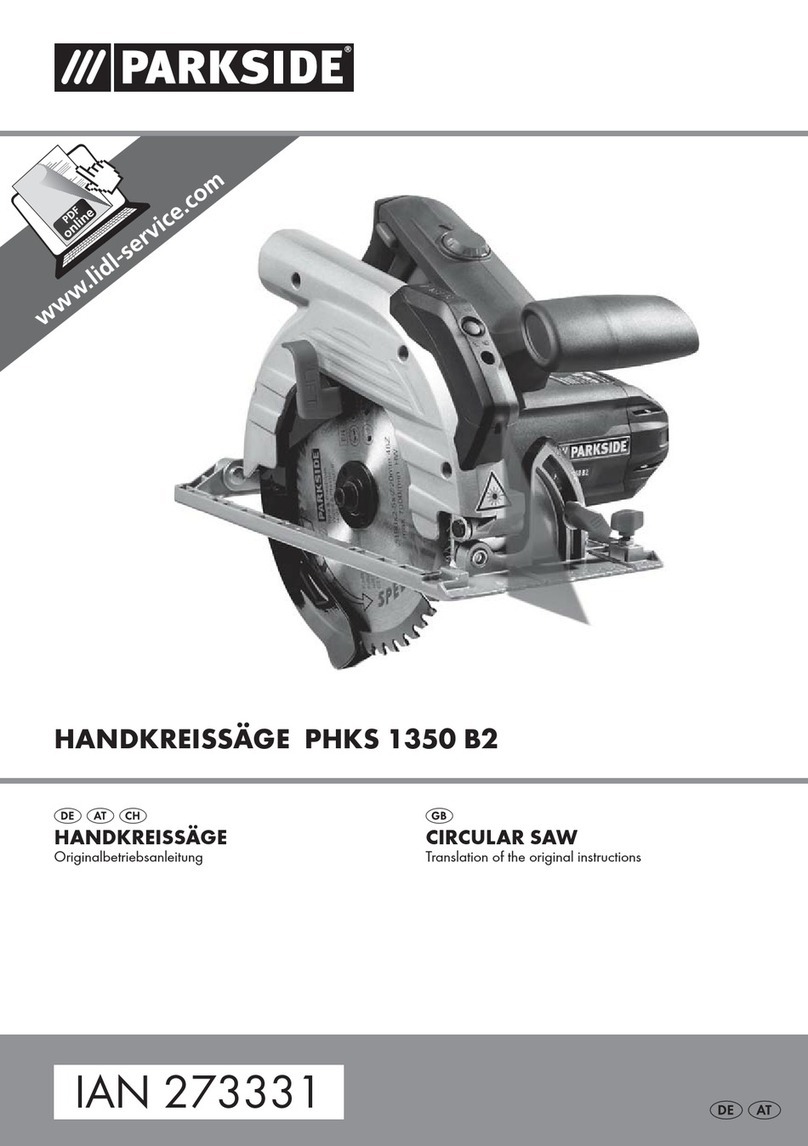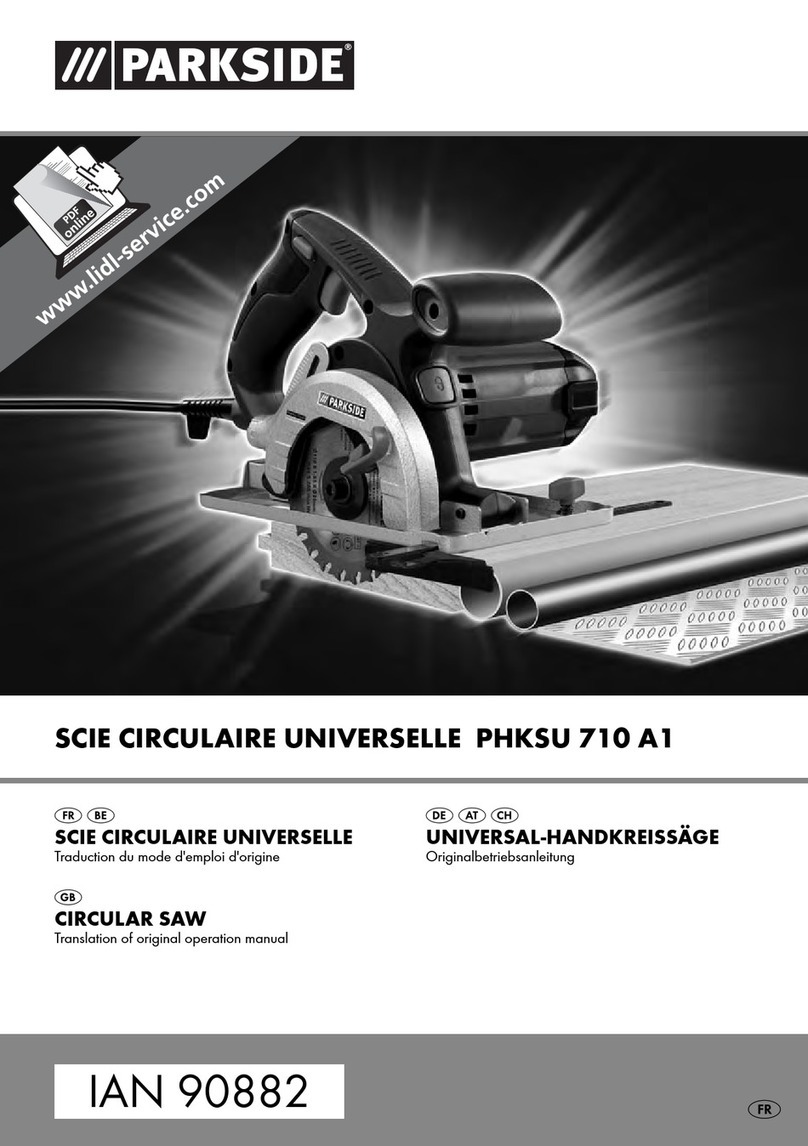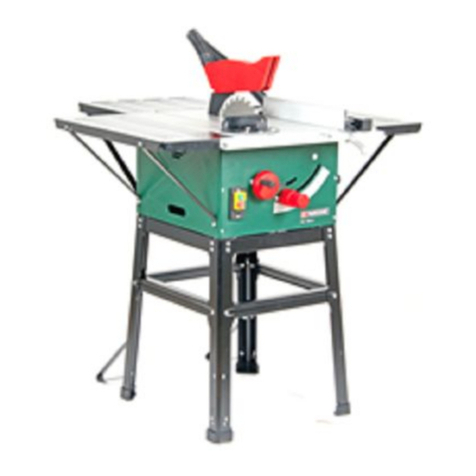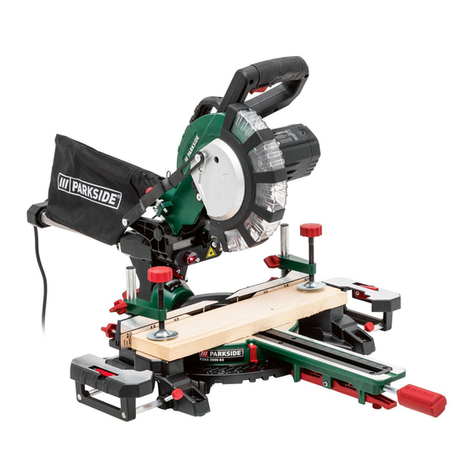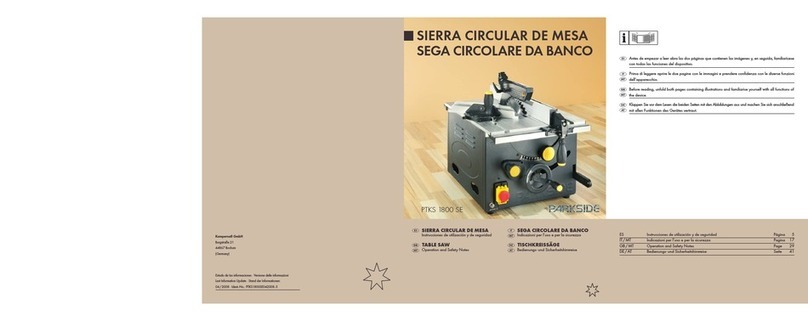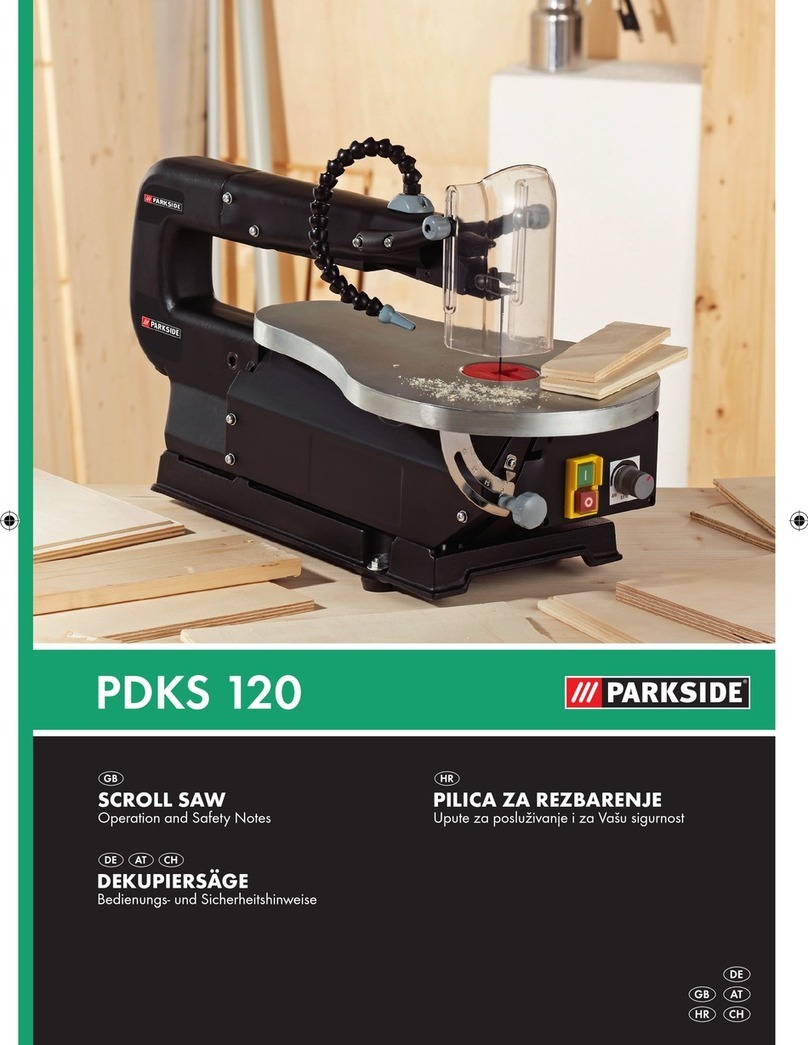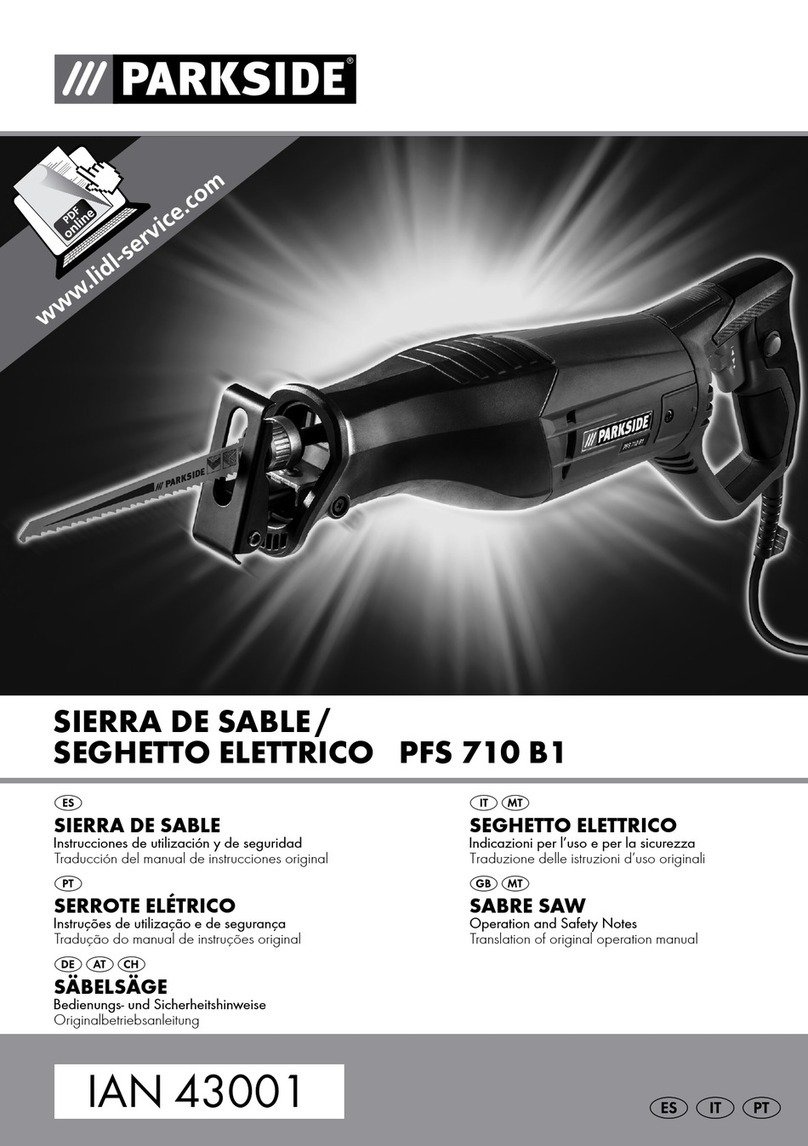JEar protectors reduce the risk of be-
coming hard of hearing in later life.
JBreathing or dust masks reduce the
risk of breathing in hazardous dusts.
JWear protective gloves when
handling saw blades and rough
materials.
JSaw blades must be carried in a container
wherever possible.
JConnect a dust collection system to the circular
saw when sawing wood.
JDo not use HSS saw blades (high-alloy high-
speed steel).
JThe push stick must always be kept in the vicini-
ty of the machine.
Operating the machine safely:
JUse the push stick to guide the workpiece safely
past the saw blade.
JUse the riving knife and keep it correctly set.
JUse the blade guard and keep it correctly set.
JDo not carry out any rebating or grooving un-
less a suitable guard, such as a tunnel guard,
is attached to the saw table.
JThe circular saw must not be used for slotting
(a groove ending in the workpiece).
JOnly use saw blades that have a highest per-
missible speed not less than the maximum shaft
speed (rated speed of the table saw and the
workpiece being sawn).
JTransport the machine by the provided handling
points only; do not use the guards to handle or
move the machine.
JThe top part of the saw blade must be covered
by the saw blade guard during transport.
JSecuring the workpiece. Curved or
round workpieces must be secured against slip-
ping during sawing. If necessary use special
clamps.
JDo not saw any material containing
asbestos. Asbestos is a known carcinogen.
JTake precautions when working with
dusts which may be hazardous to
health, combustible or explosive. For
example: Some dusts are classed as
carcinogenic. Wear a dust mask and use a
dust or chipping extraction device, if one can
be connected.
JKeep your working area clean.
Mixtures of materials can be particularly danger-
ous. Light metal alloy dust may burn or explode.
JNever leave the electric power tool
before it comes to a complete stand-
still. An on-running blade might injure somebody.
JDo not use the electrical power tool if
it has a damaged mains lead. Do not
touch the damaged lead. Pull the
mains plug out of the socket if the
mains lead becomes damaged dur-
ing use. Damaged mains leads increase the
risk of electric shock.
JIf you use the electrical power tool
outdoors, always connect it through
a residual current device (RCD).
JConnect the electrical power tool to a
properly earthed power circuit. Sock-
ets and extension leads must have properly
functioning earth contacts.
JDo not stand on the electrical power
tool. Serious injuries could result if the table
tips over or you inadvertently come into con-
tact with the saw blade.
JEnsure that the blade guard is prop-
erly positioned. It must always lie against
the workpiece when you are sawing.
JKeep your hands clear of the saw
blade and away from the area
around the saw. Contact with the saw
blade may result in injury.
JNever reach behind the sawblade to
hold the workpiece, remove sawdust
or for any other reason. Your hand is
too close to the rotating sawblade when you
do this.
JJust guide the workpiece up to the
rotating sawblade. Otherwise there is the
danger of kickback if the saw blade gets
caught in the workpiece.
JUse the electrical power tool only if
the working area is clear of all set-
ting tools, sawdust etc. apart from
the workpiece. Any small pieces of wood
Safety advice
